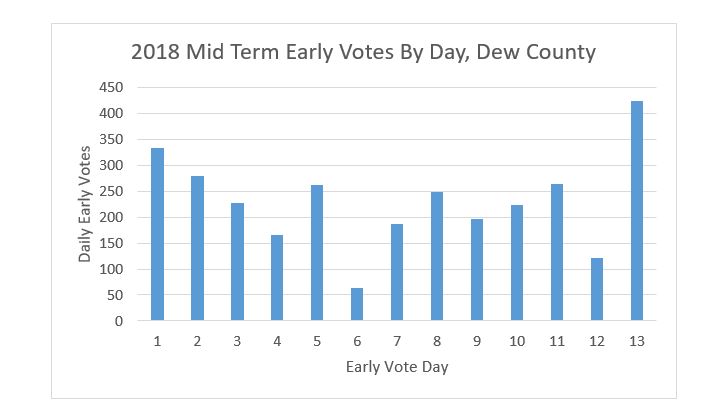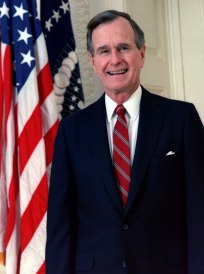By John C. Davis
In the age of the COVID-19 global pandemic, we must attempt to acclimate our lives around a new, temporary, normality and work together to ensure our civic institutions remain intact in this time of crisis. As a grandson, son, husband, and father, my primary and immediate concern is for the health and safety of loved ones and strangers alike. As a political scientist, I am also very concerned about the potential impact the novel coronavirus,—COVID-19—might have on elections in November.
Arkansans must now begin to plan for the upcoming elections to ensure that they are conducted in a way that is safe and accessible. We’ve already seen this highly contagious virus compel states and territories to alter elections. As of March 24th, Connecticut, Georgia, Indiana, Kentucky, Louisiana, Maryland, Ohio, Rhode Island, and Puerto Rico have postponed elections planned for this spring in order to protect their residents and prevent further spread. While these measures, in my opinion, are responsible steps that align well with current guidelines by health experts to minimize outings and maintain social distancing, the practice of postponing primary elections should not and cannot tempt us into allowing our general elections in the fall to undergo significant alteration or force us to adopt untested means by which to facilitate voting. Nor can we assume everything will return to normal by fall. The prospect of COVID-19 forcing states to reschedule or significantly alter elections with unknown effects to turnout or accessibility, of any type, even in a time of extraordinary challenges, should concern us all. At the same time, we cannot ignore the very real threat to public safety that having traditional voting at polling sites poses.
The coming months will test our ability—as a nation and state—to mobilize efforts to ensure the most vital tool of the democratic experiment is not blunted by our current situation or by our inability to adapt and persevere. Therein lies our puzzle. We will need to adapt and innovate while being mindful to do so in such a way that does not drastically alter our elections or negatively impact a voter’s ability to cast a ballot. Much like the response to the current health and economic crises, the comprehensive solution to the civic problem we will soon face will require multiple levels of government accepting their respective roles and taking responsibility for that which they are able to control. In our federalist governmental structure—a system of government stemming from a multi- layered interplay between national, state, county, and local governments and jurisdictions—elections are largely regulated and facilitated at the state and local levels in the United States. That means that, while assistance in the way of funds and collaboration from the U.S. government might be needed, our focus should be on Arkansas’s capacity to be responsive and capable of conducting elections in the time of an unprecedented health emergency.
Fortunately, Arkansas already has a proven mechanism in place that allows us to significantly reduce social interaction and conduct our most sacred civic practice—absentee voting. Absentee voting is facilitated by mail. Additionally, thanks to federalism, we can also study and learn from other states’ practices to inform our steps, moving forward. According to the National Conference of State Legislatures, all states have some mechanism in place to permit absentee voting by mail. Approximately two-thirds of states allow registered voters the opportunity to vote absentee without giving a qualified reason or seeking a permissible excuse, while roughly one-third—including Arkansas—requires the voter to provide a reason for seeking to vote by mail. According to a Supreme Court of Arkansas case, Forrest v. Baker (1985), qualified excuses include anticipating the inability to get to a designated polling place before it closes, work schedule conflicts, and “sickness in the family” are among the permissible reasons to request an absentee ballot in Arkansas. This means what, while Arkansas requires voters give a proper reason to absentee vote—or vote by mail—a great many states already allow their voting residents the opportunity without citing a permissible reason for doing so. In short, Arkansas could rest assured that—should we seek to permit absentee voting free of such a restriction temporarily—many states already consider this a standard practice and see very few issues arise from the voting method.
The state justification requirement, in our current time of health crisis, is too cumbersome and time is of the essence. However, the remedy to permanently alter the state’s absentee voting justification requirement would require, at the least, a change to the state code and perhaps a constitutional amendment, the state would need an emergency order to carry out this temporary alteration to our elections.
Unfortunately, absentee voting has become something of a political football as of late. This is very unfortunate. Recently, a bi-partisan attempt by some members of the General Assembly to permit no excuse absentee voting in Arkansas for the November elections was voted down.
There is a solution, however. Governor Hutchinson’s recently issued Executive Order 20-08 suspends temporarily some provisions of election laws. The governor’s order removes the requirement for a voter to present an excuse and permits counties to reduce their number of physical polling sites to one—encouraging voters to continue to practice social distancing and avoid groups by voting via absentee ballot. While this order was directed at the immediate situation faced with imminent primary run-off elections in certain parts of the state, this portion of his order could simply be maintained until November or ordered again as we get closer to the general election.
Considering that it already exists in Arkansas and is likely going to be requested by more voters in the Natural State this upcoming election cycle than ever before anyway, absentee voting would be the most sensible near outright, temporary replacement for in-person voting to address the health concerns associated with lining up in a cramped polling place, sharing ink pens, paper, and equipment (touch screens) for the November elections. This is the most sensible solution to this temporary problem: a less restrictive process for obtaining an absentee ballot and a robust effort to distribute and process mail in ballots at an unprecedented scale.
What would it take for the state to meet unprecedented demand for absentee voting in November? A shared desire to see our elections continue uninterrupted and conducted in such a way so as not to further risk the spread of COVID-19 from voters and public officials. Further, we would need to be willing to act fast and accomplish our objective without a statutory change or constitutional amendment and provide resources where needed to maintain electoral integrity. For Arkansas to ensure voting occurs safely in November, in a manner that limits the spread of COVID-19, and is accessible to all voters, we must support another Emergency Order from Governor Hutchinson—or a continuation of the presently enacted one. Also, we must ensure Secretary of State John Thurston, his staff, and all county and local elections officials have the funds and resources necessary to aggressively implement a persistent information campaign, print an absentee ballot for each voter, and accurately count and report results in a timely manner.
Given the human and economic toll of COVID-19, the issue posed here is likely not in the minds of many today. However, it is vitally important that planning begin now to ensure the necessary changes to our voting procedures and the requisite means are in place long before Tuesday, November
3rd. Fortunately, we need not reinvent the wheel in order to carry out our chief civic responsibility in the age of a global pandemic. The solution already exists in the form of absentee voting, albeit in a broader application at an unprecedented scale for our state, and the emergency powers of Governor Hutchinson.
This is a serious problem with a practical, pragmatic solution. It’s up to us to take on the challenge. As a scholar of Arkansas politics and policy, and a native of the Natural State, I am optimistic that we are all up to the task.
Note: An earlier version of this piece appeared in the Arkansas Democrat-Gazette.
 We see something resembling an inverted “bell curve” as the first and final days of early voting appear to have been the busiest early voting days in the county.
We see something resembling an inverted “bell curve” as the first and final days of early voting appear to have been the busiest early voting days in the county. This morning, we learned of the passing of a legendary figure in our country and one of the most significant figures in the 20th Century; George H. W. Bush. President Bush answered every time the country asked him to serve as a veteran and war hero in World War II, a member of Congress, CIA Director, Vice President, and President. A family man, he remained married to his wife for 73 years, until her passing this past spring.
This morning, we learned of the passing of a legendary figure in our country and one of the most significant figures in the 20th Century; George H. W. Bush. President Bush answered every time the country asked him to serve as a veteran and war hero in World War II, a member of Congress, CIA Director, Vice President, and President. A family man, he remained married to his wife for 73 years, until her passing this past spring.